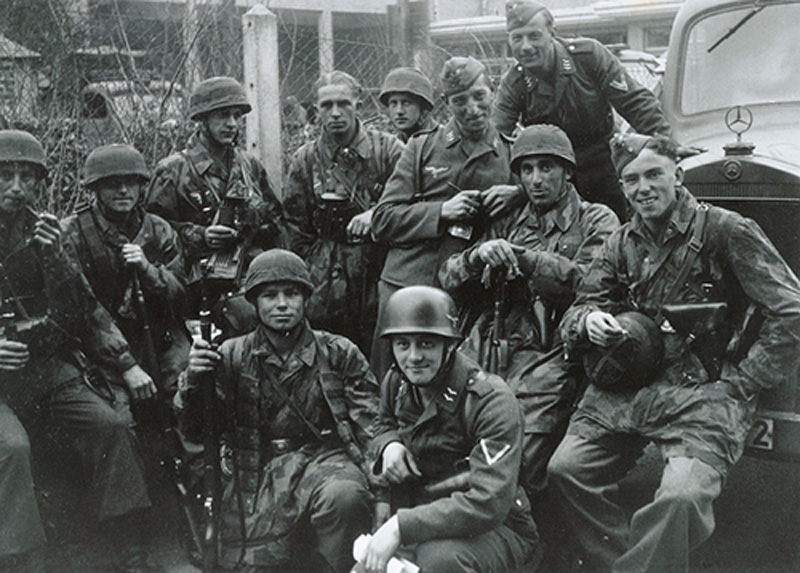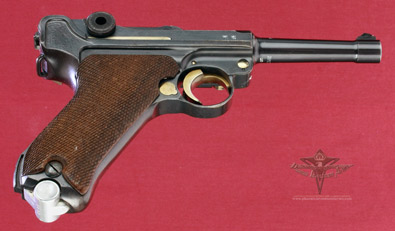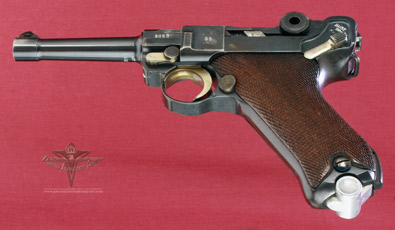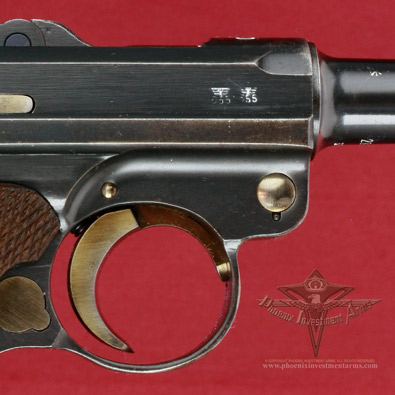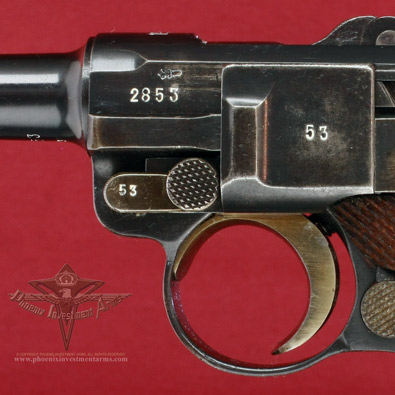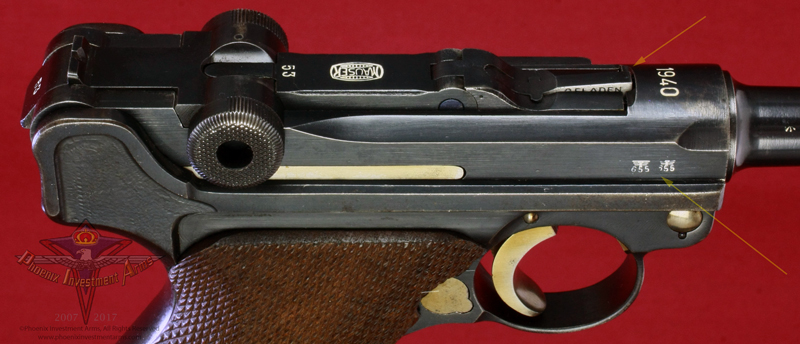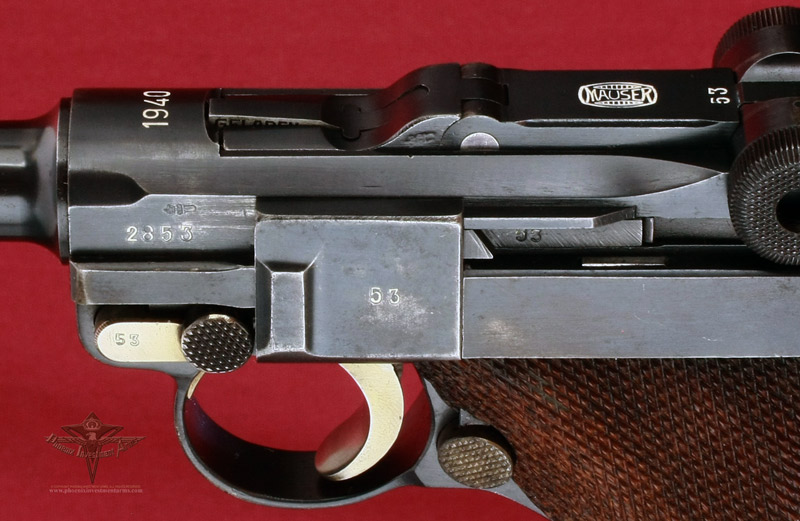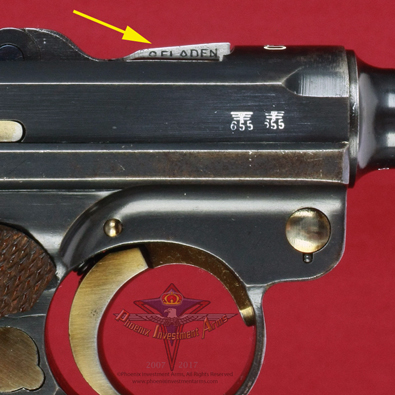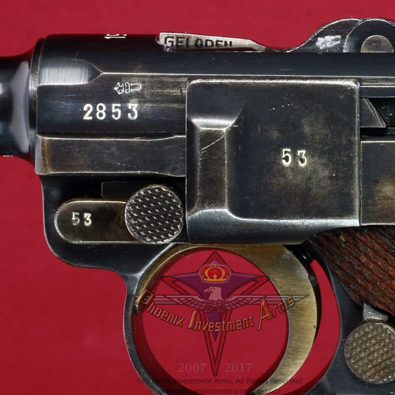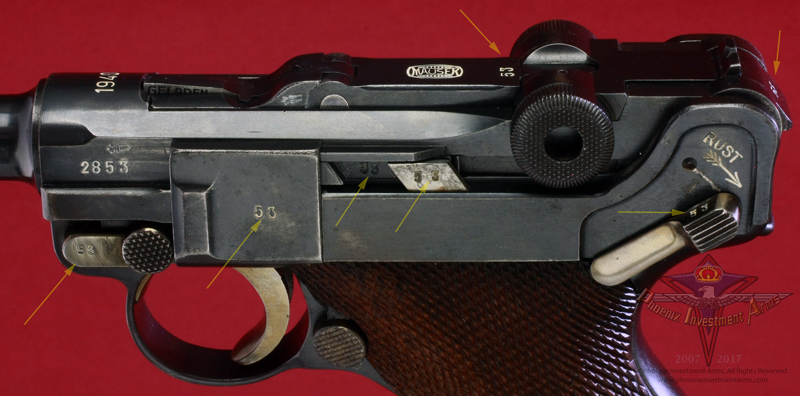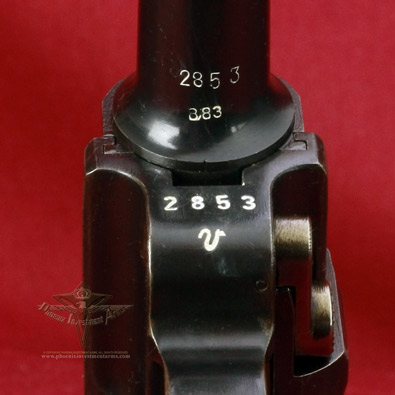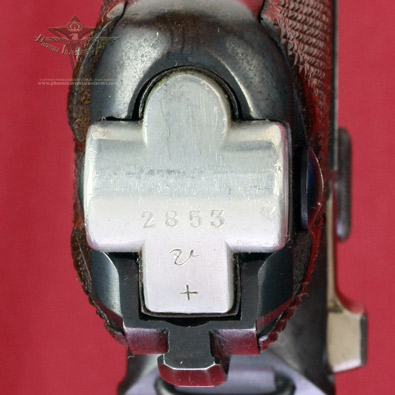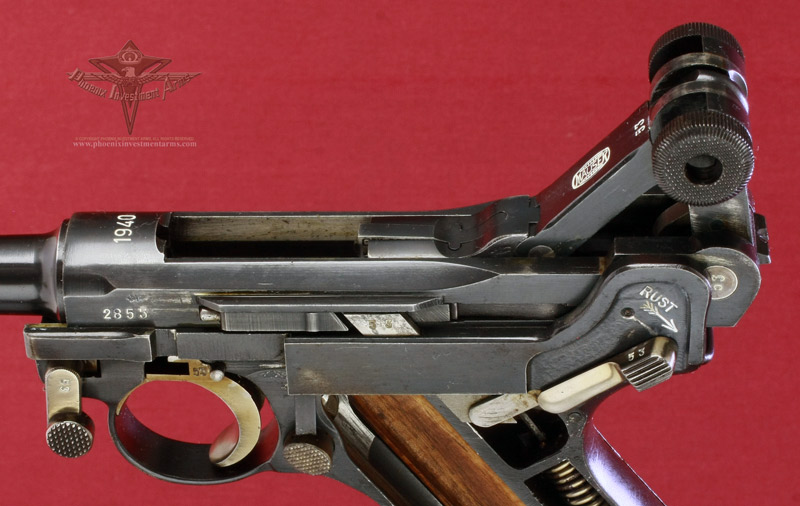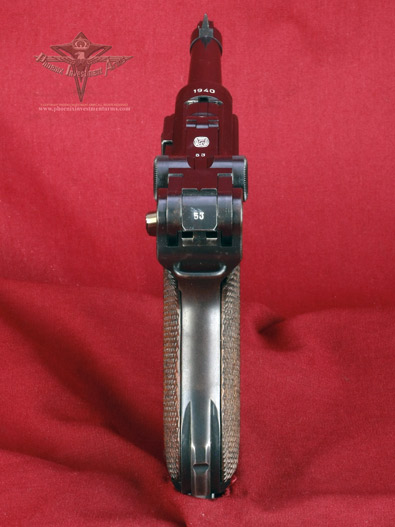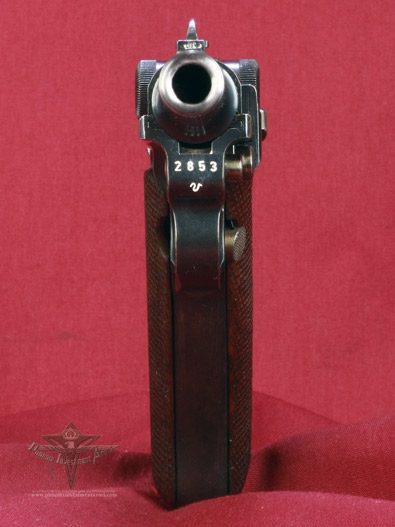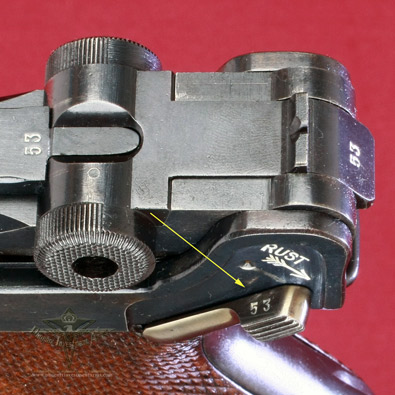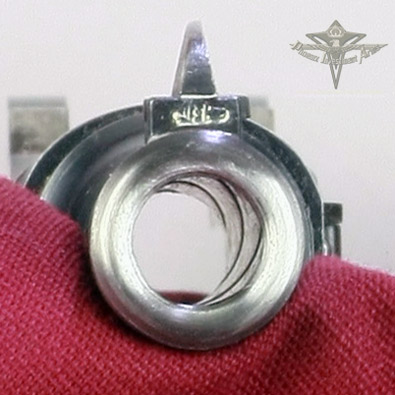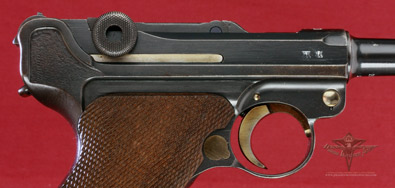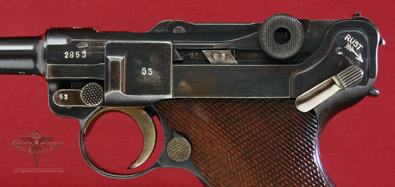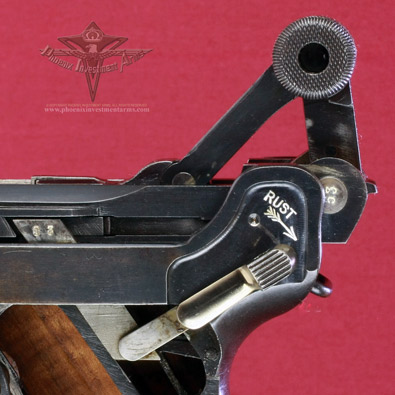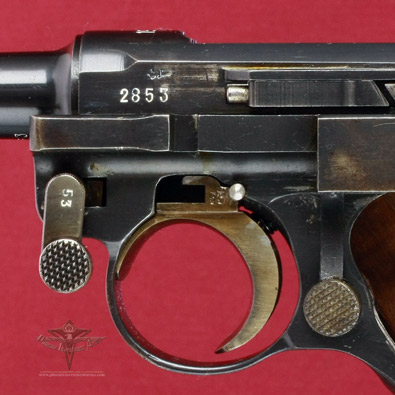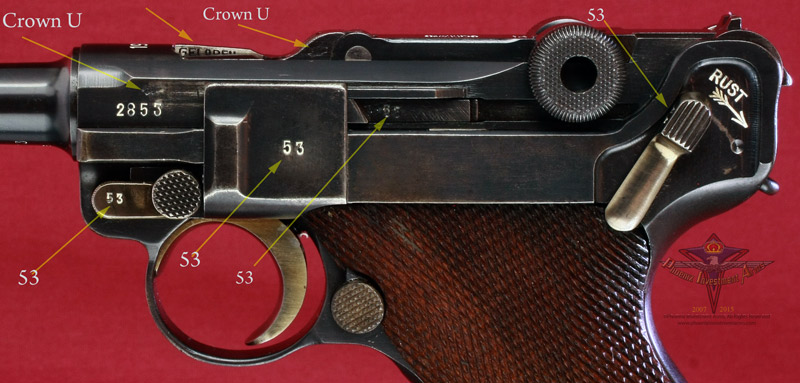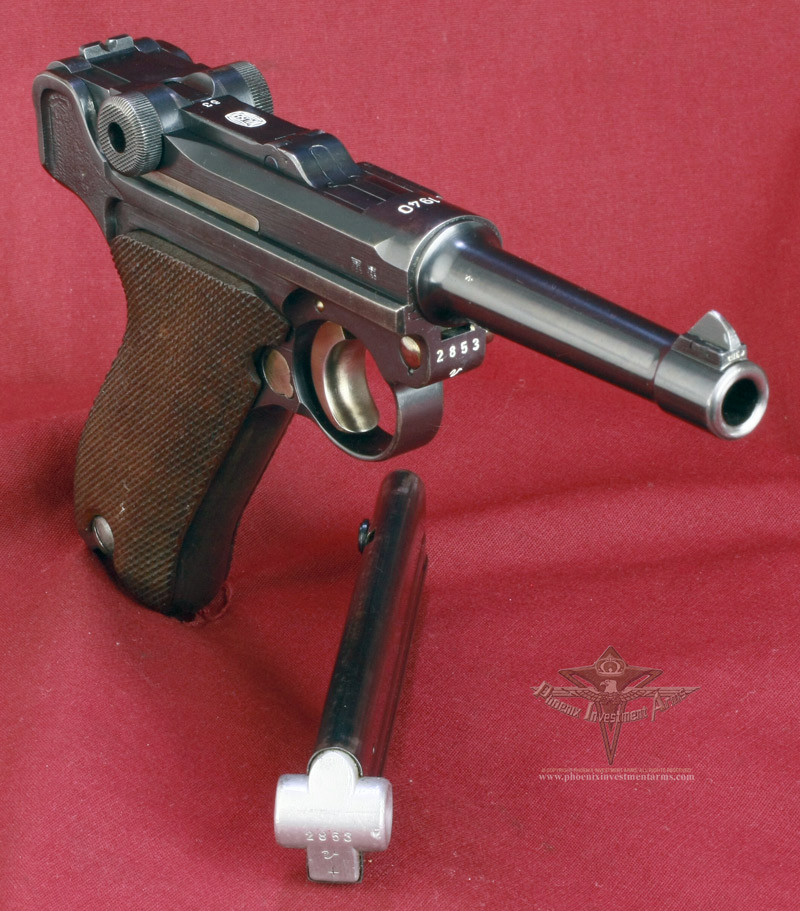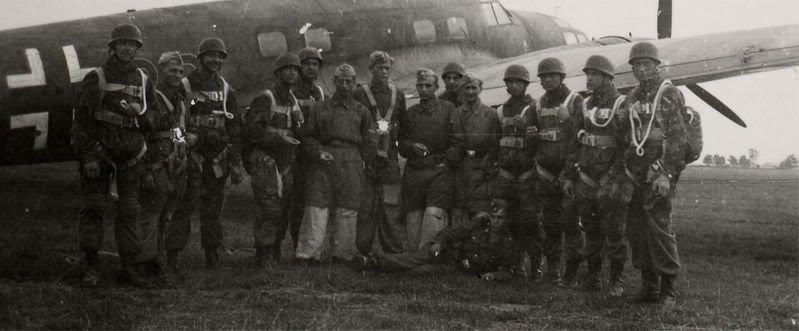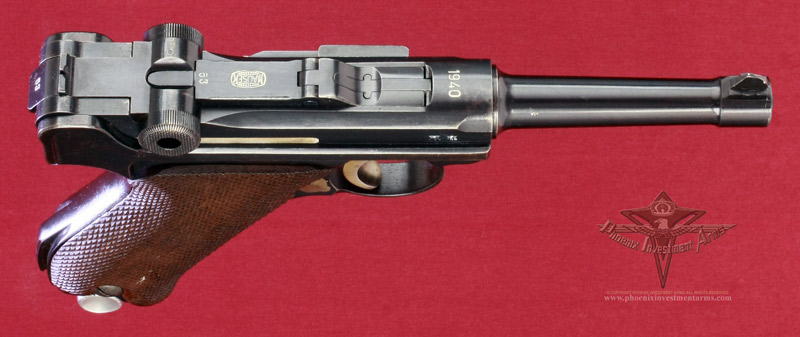1940 Mauser Banner Dutch Contract
SOLDPHOENIX INVESTMENT ARMS -
PREMIUM COLLECTOR LUGERS
Genuine German
Luger - Largest Variety of Lugers Offered
Home | Post WWI DWM | Erfurt Lugers | Mauser | Simson Suhl | Krieghoff | Vickers | Swiss Bern | Other Guns
Bottom of Page
 |
|
The is one of the 1940 contract Dutch Lugers made by Mauser 'Commercial Banners' for delivery to Holland which contract was overcome by events with the German Invasion of Holland on May 10, 1940. Unlike other Banner Mauser's this variation bears the Crown U (Oberndorf) proof but not the late German Army Test proof on the right receiver. Characterized by the "Rust" with Arrow on the thumb safety and small strawed parts. These are highly coveted Parabellums by the collectors as the "gun that never was". (1735) |
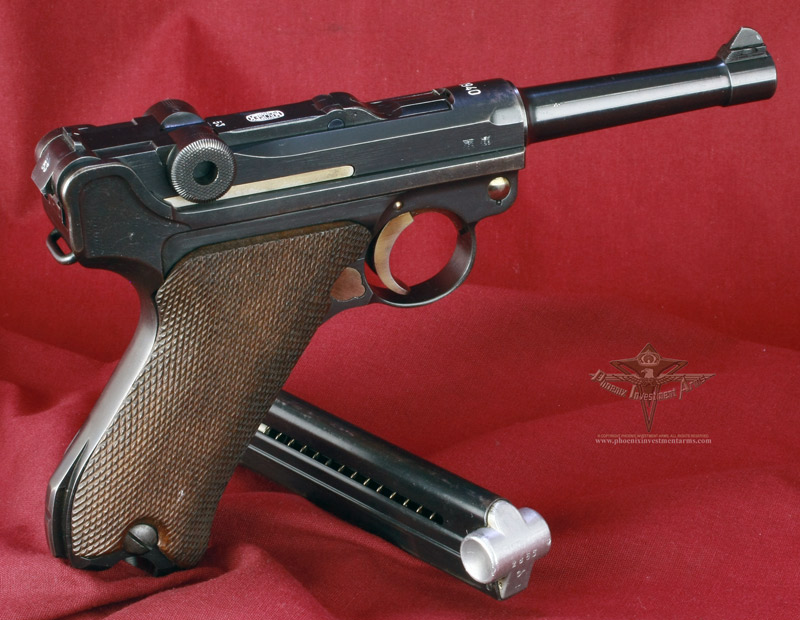 |
|
NOTE: Photographs taken today with the high mega-pixel camera show more than we sometimes can see with the human eye. Magnified close-ups show us tool marks and natural surface conditions that one normally doesn't see in the ordinary handling of the weapon. Photographs are copyrighted, all rights reserved, any extraction, reproduction or display of gun pictures without the express consent of the Phoenix Investment Arms is strictly prohibited. Thank you for your cooperation. |
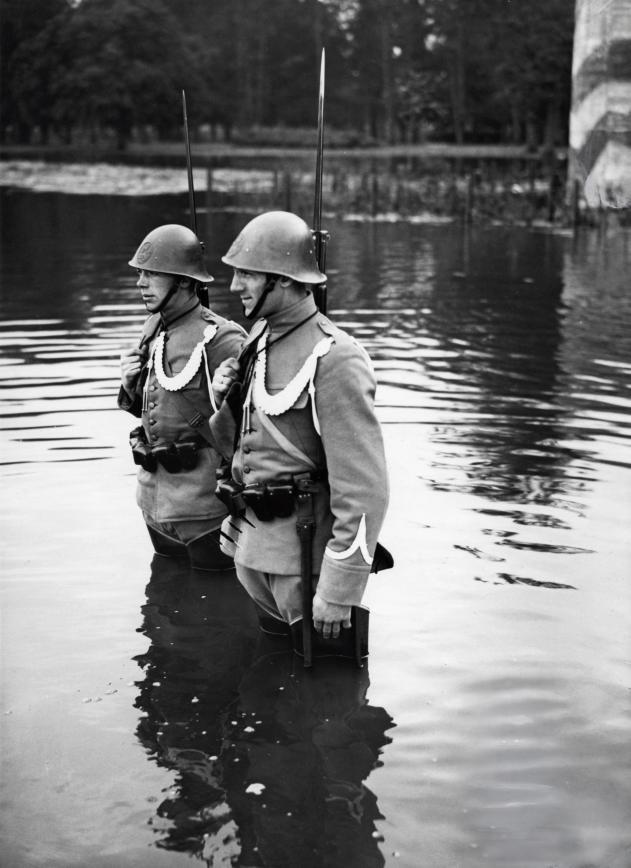
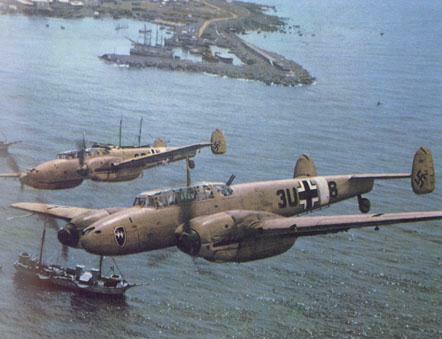 There
are a circle of waters around the Dutch capital and the only crossings
were the bridges which must be captured by the German forces to permit
their mechanized units to pass before the bridges were destroyed.
So began one of the first Airborne Operations of the
German
Fallschirmjäger
(Paratroops).
There
are a circle of waters around the Dutch capital and the only crossings
were the bridges which must be captured by the German forces to permit
their mechanized units to pass before the bridges were destroyed.
So began one of the first Airborne Operations of the
German
Fallschirmjäger
(Paratroops).